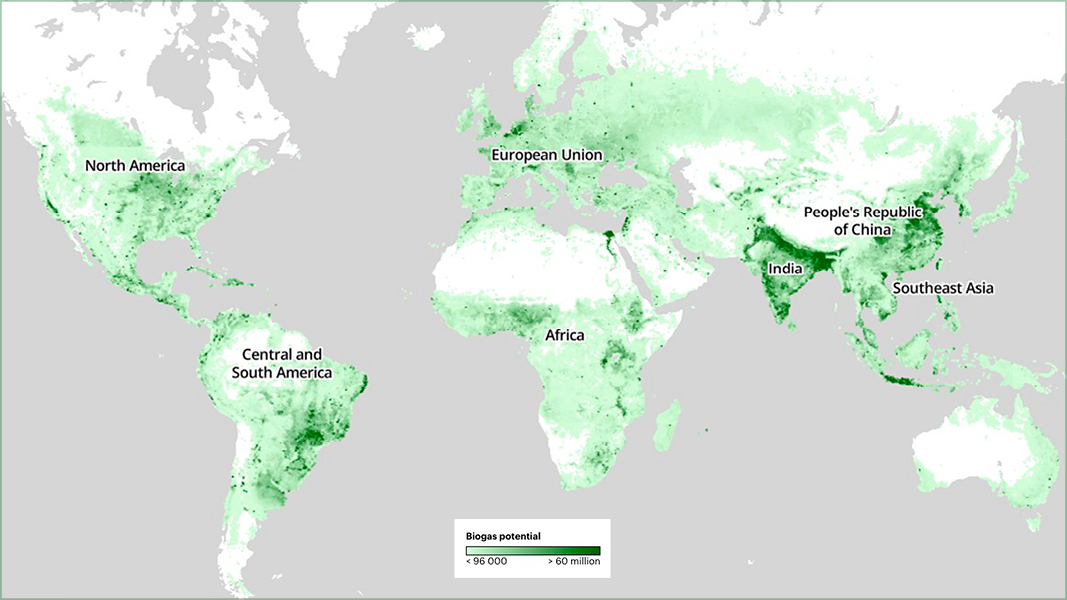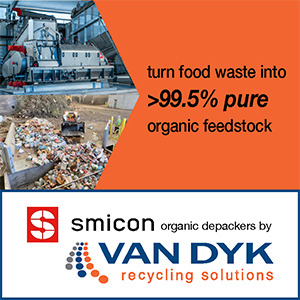Top: A geospatial analysis found that biogas production could reach the equivalent of nearly 1 trillion cubic meters of natural gas annually from feedstocks that can be considered sustainable. Image courtesy International Energy Agency
The International Energy Agency (IEA), an intergovernmental organization created in 1974 in response to the oil crisis, provides policy recommendations, analysis, and data on the global energy sector. IEA released a report in late May that is “a first of its kind” geospatial assessment on the untapped potential of locally produced, low-emissions fuels created from organic waste. The Outlook for Biogases and Biomethane identified over 50 new policies that have been introduced to support biogases since 2020 as countries increasingly recognize the benefits of biogas that “can be used directly as heat by households and industry and to produce electricity, and biomethane, an upgraded form of biogas that has many advantages as a drop-in substitute for natural gas.”
The technologies and supply chains required to produce biogases are mature and well known, and they score highly on energy security metrics, the report finds: “Biogas and biomethane are produced close to where they are consumed, most of the materials needed tend to be sourced nationally, and they can help provide employment and income for rural communities. Additionally, biogases are dispatchable sources of power, which can help balance supply and demand, and biomethane can be used without any major modifications to existing gas infrastructure.”
To understand the full potential for biogases globally, the IEA conducted a spatial analysis of over 5 million locations worldwide. It found that biogas production could reach the equivalent of nearly 1 trillion cubic meters of natural gas annually from feedstocks that can be considered sustainable, e.g., “wastes and residues that can be processed with existing technologies and do not compete with food systems, for instance.” IEA notes that this volume corresponds to a quarter of the world’s annual demand for natural gas today. However, it adds, “biogas and biomethane still play a relatively minor role in the global energy mix. While human activities generate billions of metric tons of organic waste annually, less than 5% of potential sustainable feedstock is currently being used for biogas and biomethane production.”
One of the “numerous” regulatory and economic barriers cited in the report that are holding back biogas uptake today, is the length of time to develop a project: “On average, it takes two to five years to develop a project in the sector, but in some cases, it can take up to seven years just to secure the necessary permits. And although the underlying technologies have been around for years, biomethane production costs remain significantly above those for natural gas in many markets. … Achieving widespread cost competitiveness would require targeted policy support or carbon dioxide (CO2) pricing, for example.”
That said, the report’s analysis finds that five times the current level of biomethane production globally could be developed at a cost equal to or lower than prevailing wholesale natural gas prices. IEA adds that “the competitiveness of biogases greatly improves when policies recognize the numerous co-benefits, such as avoided methane emissions from the agricultural sector and byproducts from production that can be used as sustainable fertilizer.”













